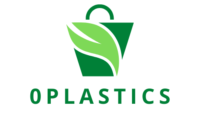As environmental concerns continue to shape consumer behaviors, plastic-free brands are not only driving change in the sustainability realm but are also catching the attention of investors in the financial landscape. This article explores the intersection of finance and eco-conscious business practices, shedding light on how investments in plastic-free brands contribute to a green future.
1. Sustainable Investment Trends:
The financial landscape is witnessing a notable surge in sustainable investing, with a growing focus on companies dedicated to environmental and social responsibility. Plastic-free brands, aligning with these sustainability trends, are attracting investments from funds and investors committed to supporting businesses that prioritize eco-friendly alternatives and ethical practices.
2. Environmental, Social, and Governance (ESG) Criteria:
Plastic-free brands are evaluated through the lens of Environmental, Social, and Governance (ESG) criteria by many investors. ESG-focused investments consider a company’s environmental impact, social responsibility, and governance practices. Plastic-free brands that meet or exceed ESG standards often find themselves in favorable positions to attract sustainable investment.
3. Positive Impact Investing:
Positive impact investing goes beyond avoiding harm and actively seeks to make a positive contribution to society and the environment. Plastic-free brands, by virtue of their commitment to reducing plastic pollution and promoting sustainable alternatives, become attractive options for investors looking to make a positive impact on the planet while achieving financial returns.
4. Innovation in Sustainable Materials:Investors are drawn to plastic-free brands that demonstrate innovation in sustainable materials. Companies that invest in research and development, discovering and implementing cutting-edge eco-friendly materials, often capture the attention of investors seeking businesses at the forefront of environmental innovation.
5. Market Growth Potential:
Plastic-free brands operating in a market with significant growth potential are appealing to investors. As consumer awareness and demand for sustainable alternatives continue to rise, investors see the potential for substantial returns in industries focused on reducing plastic use and promoting environmentally friendly solutions.
6. Collaboration with Impact Investors:
Collaboration with impact investors, who prioritize both financial returns and positive societal and environmental impacts, can be a strategic move for plastic-free brands. Impact investors often bring expertise, resources, and networks that contribute to the sustainable growth and scalability of these businesses.
7. Alignment with Global Sustainability Goals:
Plastic-free brands that align their missions with global sustainability goals, such as the United Nations Sustainable Development Goals (SDGs), resonate with impact-driven investors. The alignment with broader sustainability initiatives positions these brands as contributors to the global effort to address pressing environmental challenges.
8. Transparency in Business Practices:
Transparency in business practices is crucial in attracting investment. Plastic-free brands that openly communicate their sourcing methods, supply chain practices, and environmental impact foster trust with investors. Transparent communication contributes to a positive brand image and reinforces the authenticity of the brand’s commitment to sustainability.
9. Consumer Loyalty and Brand Equity:
Plastic-free brands that have successfully built consumer loyalty and strong brand equity are viewed favorably by investors. A dedicated customer base often translates into sustainable revenue streams and long-term viability, making these brands more attractive investment opportunities.
10. Government and Regulatory Support:
Government and regulatory support for sustainable initiatives can create a conducive environment for plastic-free brands. Investors may be more inclined to support businesses operating in regions where there are policies and incentives promoting sustainability and environmentally friendly practices.
In conclusion, the financial landscape of plastic-free brands is experiencing a notable shift as investors increasingly recognize the value and potential for returns in eco-conscious business practices. By aligning with sustainable investment trends, meeting ESG criteria, showcasing innovation, targeting markets with growth potential, collaborating with impact investors, aligning with global sustainability goals, maintaining transparency, building consumer loyalty, and benefiting from government and regulatory support, plastic-free brands are not only contributing to a green future but also positioning themselves as attractive investments in the eyes of financially and environmentally conscious investors.
